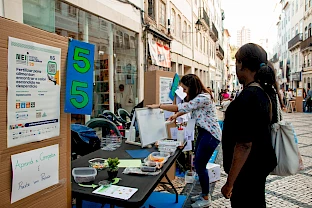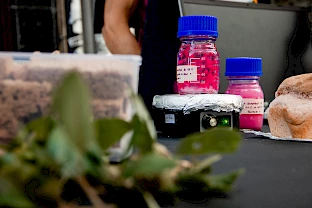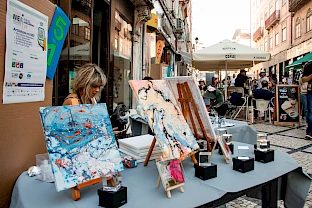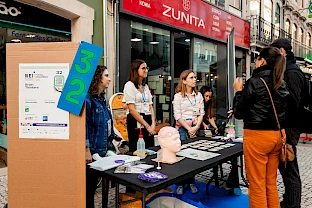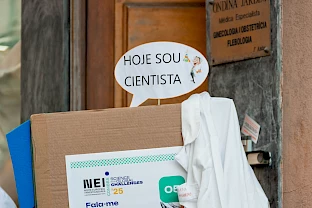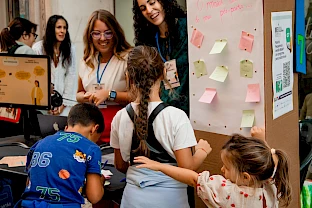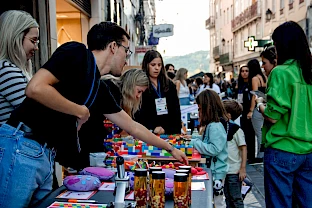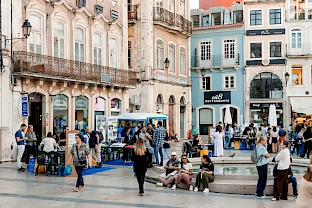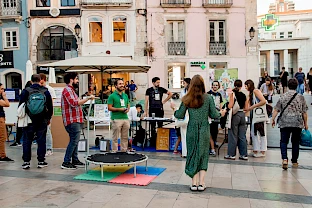One of the activities that caught visitors’ attention was GenExpress, a 'board game' that introduces basic gene therapy concepts and the work of GeneT, the Centre of Excellence in Gene Therapy in Portugal. Created by Mariana Ricardo, a biology graduate, the game takes the form of a life-sized board game in which players act as the pawns. As they progress, they answer questions and face challenges to move forward or backwards, mirroring the twists and turns of scientific research.
Players learn about 'what a vector is, what a gene is, and which diseases can be treated', among other concepts, in GenExpress, one of 93 activities featured during European Researchers' Night 2025 (ERN'25). This was the largest edition yet, with over 600 researchers from the University of Coimbra filling the city centre, from Praça 8 de Maio to Largo da Portagem.
Mental health was also in the spotlight during European Researchers’ Night 2025. Let’s Talk About Children, a programme implemented in Portugal by the Faculty of Medicine of the University of Coimbra (FMUC) and the Local Health Unit, aims “to deliver brief interventions with children and families to promote mental health and prevent the intergenerational transmission of psychiatric conditions,” explains child psychiatrist Sara Pedroso.
Surrounded by children, the project brought playful activities to ERN’25, such as “the emotion charades game, where one person makes the expressions shown on cards and the other has to guess the emotion; the colour monsters; a brain quiz; and colouring sheets for the youngest participants.”
The activities of European Researchers’ Night are funded by Horizon Europe, through a consortium of nine partners in Portugal: the University of Coimbra; the University of Lisbon, via its National Museum of Natural History and Science; Nova University Lisbon, via its Faculty of Science and Technology; ISCTE – University Institute of Lisbon; the Estoril School of Hospitality and Tourism; Lisbon City Council; the School of Sciences at the University of Minho; the Iberian International Laboratory; and the University of Évora, via the Hércules Laboratory.
















